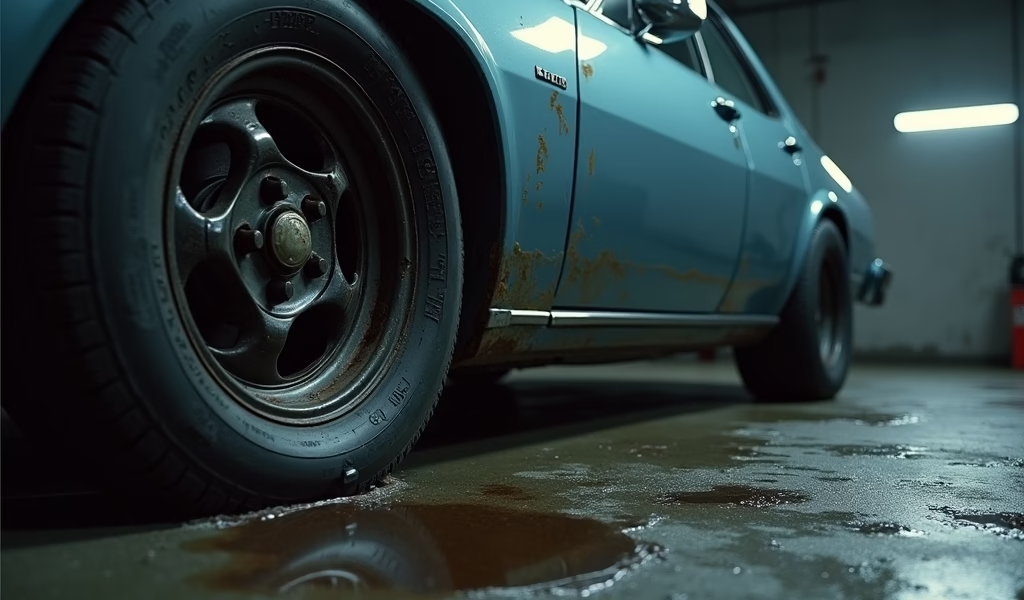Overview
This article reveals seven professional car maintenance secrets that preserve vehicle value and performance, including proper washing techniques, engine bay cleaning, interior preservation, fluid monitoring, tire care, preventative maintenance scheduling, and documentation systems. These practices not only extend vehicle life and prevent costly repairs but also significantly increase resale value when properly documented and implemented.
Table of Contents
- The Secret World of Professional Car Care
- Secret #1: The Washing Ritual That Preserves Paint
- Secret #2: Engine Bay Maintenance Most Owners Miss
- Secret #3: Interior Preservation Beyond Vacuuming
- Secret #4: Fluid Checks That Prevent Costly Repairs
- Secret #5: Tire Care Techniques for Extended Life
- Secret #6: Preventative Maintenance Schedule
- Secret #7: Documentation Systems That Boost Resale Value
- Conclusion: Implementing These Secrets For Your Vehicle
- Frequently Asked Questions
The Secret World of Professional Car Care
When browsing cars for sales, have you ever wondered how some pre-owned vehicles maintain their showroom shine while others look weathered beyond their years? The difference often lies in professional-grade maintenance secrets that most everyday drivers never discover. These groundbreaking practices aren’t just about aesthetics—they’re the silver bullet for preserving your vehicle’s value and performance.
After spending 20 years under the hood of everything from family sedans to exotic sports cars, I’ve compiled the heart-winning techniques that separate amateur maintenance from professional care. These aren’t complicated procedures requiring specialized equipment—they’re down-to-earth habits that anyone can adopt.
The cars for sales market reveals a stark truth: vehicles maintained with professional techniques command significantly higher prices and sell much faster. According to Consumer Reports, well-maintained vehicles can retain up to 63% more value than neglected counterparts with similar mileage.
Let’s pop the hood on these seven professional secrets that will transform your approach to car care forever.
Secret #1: The Washing Ritual That Preserves Paint
The elephant in the room with many car owners is improper washing technique. That quick gas station car wash might seem convenient, but it’s potentially dragging microscopic contaminants across your paint. Professional detailers know washing isn’t just about cleanliness—it’s the foundation of paint preservation.
Start with the two-bucket method: one bucket with soapy water using pH-balanced automotive soap (never dish detergent which strips wax), and another with clean rinse water. This prevents swirl marks—those spider-web scratches visible in direct sunlight that plague most vehicles over three years old.
Always use a microfiber mitt working from top to bottom, rinsing frequently. Those abrasive sponges from the kitchen? They’re red flags for paint damage. After washing, dry immediately with a plush microfiber towel to prevent water spots that can etch into clear coat over time.
The real game-changer comes with the quarterly application of a high-quality synthetic wax or ceramic coating. This creates a sacrificial layer that protects against environmental contaminants, UV damage, and makes subsequent cleaning effortless. When potential buyers inspect cars for sales listings, paint condition immediately signals whether a vehicle has received proper care.
Remember to wash in the shade with cool panels. Hot surfaces cause soap to dry prematurely, leaving stubborn residue that requires more aggressive removal methods—exactly what we’re trying to avoid.

Secret #2: Engine Bay Maintenance Most Owners Miss
When evaluating new cars for sale, a clean engine compartment speaks volumes about overall maintenance. Yet most owners never venture under the hood except for emergencies. This blind spot creates a prime opportunity to differentiate your vehicle when it’s time to sell.
Professional mechanics don’t just check fluid levels—they maintain a spotless engine bay that prevents accelerated component degradation. A clean engine runs cooler, makes leaks immediately visible, and creates a powerful impression during pre-purchase inspections.
Begin with the engine cold and cover sensitive electronic components with plastic bags. A light misting (not pressure washing) with an all-purpose degreaser, gentle agitation with detail brushes, and a careful rinse transforms even neglected engine bays.
The real magic happens with post-cleaning protection. Apply a silicone-free dressing to hoses and non-metal components, which prevents cracking while avoiding the greasy, dirt-attracting finish of improper products. This maintenance ritual, performed quarterly, not only preserves functional components but creates that “this car has been meticulously maintained” perception that drives value in the cars for sales market.
For heavily soiled engine compartments, tackle the job in stages rather than using harsher chemicals. Patience and proper technique yield better results than aggressive products that might damage components.
Secret #3: Interior Preservation Beyond Vacuuming
Interior condition can make or break a vehicle’s perceived value. While most drivers occasionally vacuum, professional-grade interior maintenance involves a systematic approach that prevents rather than addresses wear.
Start by going the extra mile with protection. Apply UV protectant to dashboard and door panels monthly—not the glossy, dust-attracting variety, but the modern matte-finish products that preserve without the shine. This simple habit prevents the cracking and fading that plagues vehicles in sunny climates.
For leather surfaces, quarterly cleaning with pH-balanced leather cleaner followed by a quality conditioner prevents that dried, cracked appearance that screams neglect. The key is consistency—preventative application before visible wear occurs.
The transmission of knowledge from professional detailers reveals that most interior damage comes not from use but from improper cleaning. Alcohol-based products might seem effective but accelerate material degradation. Instead, use dedicated automotive cleaners formulated for specific surfaces.
Perhaps the most mouth-watering secret for prospective buyers examining cars for sales listings: proper interior maintenance includes treating hidden areas. Clean under seats, inside door pockets, and within console compartments where dust and debris accumulate. This attention to detail creates a subconscious impression of comprehensive care.
For fabric upholstery, apply fabric protectant after deep cleaning twice yearly. This creates an invisible barrier against stains while maintaining breathability—a high-octane tip that preserves appearance through years of use.
Secret #4: Fluid Checks That Prevent Costly Repairs
While most drivers understand the importance of oil changes, professional mechanics inspect all fluids weekly—a habit that puts them in the driver’s seat for early problem detection. This proactive approach saves thousands in preventable repairs and distinguishes well-maintained vehicles in the cars for sales marketplace.
Beyond the obvious engine oil, regularly check:
- Transmission fluid: Not just level but color and smell. Brown or burning odors indicate internal wear requiring immediate attention.
- Brake fluid: Should be clear to amber. Darkening indicates contamination that compromises braking efficiency.
- Power steering fluid: Often overlooked until failure, regular inspection prevents steering rack damage.
- Coolant: Check both level and condition using test strips to verify protection level and pH balance.
- Differential fluid: Rarely mentioned in basic maintenance but critical for drivetrain longevity.
The professional approach includes noting fluid consumption patterns. Sudden increases in consumption often provide early warning of developing issues, allowing for minor interventions before catastrophic failure. When browsing new autos for sale, these maintenance records demonstrate exceptional care.
For maximum effectiveness, keep a simple fluid check log in your glove compartment. This money-saving habit takes just five minutes weekly but drives the point home about your maintenance commitment when selling.
Secret #5: Tire Care Techniques for Extended Life
Tire condition speaks volumes about overall vehicle maintenance. Professional drivers know that tire care extends far beyond occasional pressure checks—it’s a comprehensive system that doubles tire life while enhancing safety.
Begin with precise pressure checks when tires are cold, at least weekly. Temperature fluctuations of just 10°F change pressure by 1 PSI, affecting wear patterns and fuel economy. Use a quality digital gauge rather than relying on the vehicle’s monitoring system, which often permits significant deviation before warning.
The wheel deal that professionals never skip: rotation with alignment check every 5,000-7,000 miles. This prevents the uneven wear that forces premature replacement. During rotation, examine for irregular patterns that might indicate suspension issues—catching these early prevents putting the brakes on your vehicle’s performance and value.
Apply tire dressing with UV protection quarterly, but steer clear of glossy, silicone-heavy products that actually accelerate rubber deterioration. Modern water-based dressings preserve rubber compounds while providing modest enhancement.
Perhaps the most valuable yet overlooked practice: proper seasonal storage for unused tires. Keep them clean, properly inflated at 10 PSI below normal, and stored vertically in a cool, dry environment away from direct sunlight and ozone sources like motors and furnaces. This attention to detail resonates with discerning buyers in the cars for sales market who recognize the value of comprehensive maintenance.

Secret #6: Preventative Maintenance Schedule
While most drivers follow manufacturer-recommended service intervals, professionals develop customized maintenance schedules based on actual driving conditions rather than idealized scenarios. This trail-blazing approach prevents stuck in neutral thinking about vehicle care.
Create a personalized schedule that accounts for your specific driving patterns. Short trips, extreme temperatures, and dusty conditions accelerate wear, requiring more frequent service than the standard schedule suggests. This proactive stance not only extends vehicle life but creates compelling documentation when entering the cars for sales market.
The professional difference includes addressing often-overlooked maintenance items:
- Fuel injector cleaning every 30,000 miles to maintain efficiency and prevent carbon buildup
- Brake fluid replacement every two years regardless of mileage (it absorbs moisture over time)
- Transmission fluid changes based on actual condition rather than mileage alone
- Battery terminal cleaning and testing quarterly to prevent starting issues
- Cabin air filter replacement every 15,000 miles for improved air quality and HVAC performance
Professionals don’t put all eggs in one basket by relying solely on dashboard indicators. They implement a proactive inspection regimen that catches developing issues before dashboard warnings appear. According to AAA, this preventative approach reduces overall maintenance costs by up to 30% over the vehicle’s lifetime.
Document all services with detailed receipts, and maintain a chronological record. This paper trail transforms your car’s story from “it’s been maintained” to “here’s proof of exceptional care” when the time comes to sell.
Secret #7: Documentation Systems That Boost Resale Value
Racing against time, most sellers scramble to organize maintenance records when listing their vehicle. Professional car enthusiasts, however, maintain comprehensive documentation from day one—a practice that can add hundreds or even thousands to resale value.
Create a dedicated maintenance portfolio with chronological records of every service, repair, and modification. Include before/after photos of significant work, and maintain a detailed log of even minor procedures like filter changes and fluid top-offs. This transparency builds instant trust with potential buyers browsing cars for sales listings.
The professional edge comes from documenting the brand and type of replacement parts and fluids. OEM or premium aftermarket components signal quality maintenance, while bargain parts suggest corner-cutting. This documentation is particularly valuable for luxury and performance vehicles where proper part selection significantly impacts longevity.
Maintain a separate section for repair-related documents showing proactive addressing of recalls and service bulletins. This demonstrates awareness and responsible ownership that resonates with knowledgeable buyers. Include a log of fuel economy readings, which provides insight into engine health over time.
The sky’s the limit when leveraging this documentation during the sales process. Detailed records addressing the vehicle’s complete history eliminate buyer uncertainty—the primary factor that drives down offers. This ear-catching approach to documentation shifts the conversation from haggling over uncertainties to appreciating documented quality.
Conclusion: Implementing These Secrets For Your Vehicle
Implementing these seven professional maintenance secrets transforms your relationship with your vehicle. Rather than burning a hole in your pocket, these practices actually reduce overall ownership costs while preserving value for when you enter the cars for sales marketplace.
Start by selecting one or two practices that seem most manageable, then gradually incorporate the others. Even partial implementation puts you miles ahead of typical ownership practices. The compounding benefits of professional-grade maintenance create a vehicle that not only performs better and lasts longer but commands premium pricing when it’s time to sell.
Remember, these aren’t complex procedures requiring specialized training—they’re simple habits that separate average from exceptional vehicle care. By shifting gears from reactive to proactive maintenance, you position yourself with mile-high standards that pay dividends throughout your ownership experience.
Whether you’re maintaining a daily driver or preparing a vehicle for sale, these seven professional secrets provide the magic wand that transforms ordinary care into extraordinary preservation. Your vehicle deserves nothing less.
Frequently Asked Questions
How often should I wash my car to maintain its value for future sale?
Wash your vehicle every 1-2 weeks and apply quality wax quarterly. This prevents contaminant buildup and protects the paint from environmental damage that diminishes value.
What’s the most important maintenance record to keep when planning to sell my car?
Oil change records with dates and mileage are the most crucial as they demonstrate consistent basic maintenance. These simple documents can increase resale value by up to 5% according to dealer surveys.
Do aftermarket modifications increase or decrease my car’s value in the sales market?
Most modifications decrease value as buyers prefer stock vehicles they can customize themselves. Exception: quality wheels, tasteful appearance upgrades, and manufacturer-approved performance enhancements may add modest value to enthusiast models.
How important is detailing before listing my car for sale?
Professional detailing typically returns 200% of its cost in increased sale price. Buyers make up their minds within the first 10 seconds of seeing a vehicle, making appearance crucial to perceived value.
Should I repair small cosmetic issues before selling my car?
Minor cosmetic repairs like paint touch-ups and small dent removal typically return 50-150% of their cost in sale value. However, leave major repairs to the new owner as you’ll rarely recover their full cost.


Pingback: Used Cars Buying Guide: Top Care Tips - knowsyourcar.com